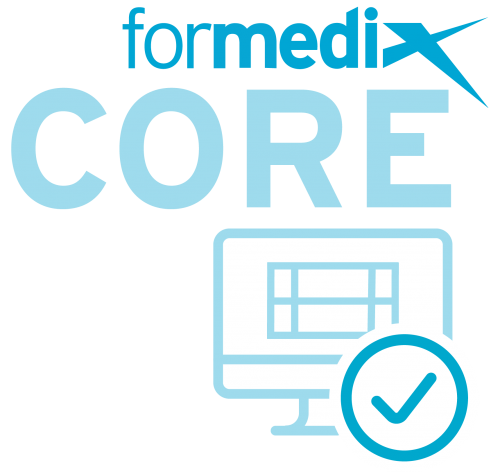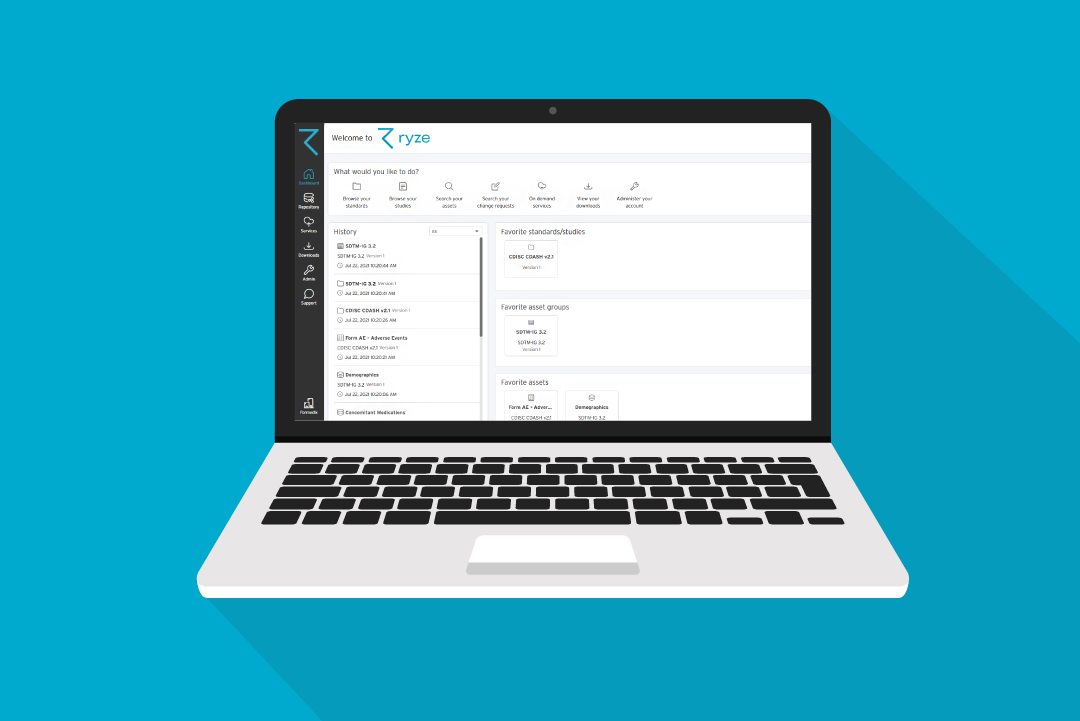This article is taken from 'Outsourcing in Clinical Trials Handbook' from www.arenainternational.com [digital edition available here].
Mark Wheeldon, chief executive officer at Formedix, answers questions on the current barriers to progress in clinical trials and how technology used during the pandemic can pave the way to faster, more efficient trials in the future.
What are the current challenges and barriers to progress that the clinical trial industry faces?
Before we talk about challenges, I have to mention the enormous progress made in clinical trials to date. When I joined the industry in the 1990s, trials were conducted on paper, and there were no standards for regulatory submission or internal standards to enable study comparisons. Each review was unique, and this caused issues for regulators and sponsors alike. Different data representation, hand-coding and double entry led to inconsistencies and errors, and comparing studies was a huge task since the data was collected and tabulated in different ways.
The industry took a huge step in 1997 when regulators and pharmaceutical companies collaborated to set standards for data collection and submission, and the Clinical Data Interchange Standards Consortium (CDISC) working group was formed. It was 19 long years until these standards were mandated for the US Food and Drug Administration (FDA) and Japanese Pharmaceuticals and Medical Devices Agency (PMDA) submissions. But regulatory review is now a more streamlined process.
The delay in adopting standardization is symptomatic of the pharmaceutical industry’s cautious approach to technology. The industry is inherently conservative, and for good reason: in drug development, although the rewards are big, the risks are high and each decision must be carefully analysed. However, when considering technology to optimize clinical trials, conservatism is a barrier. For technology vendors, sales cycles are long, and this leaves start-ups and disruptive innovators – the businesses needed to drive innovation – struggling for investment.
Software validation can take up to nine months and once software is embedded, replacement stalls, with technologies/software continuing to be used well past its sell-by date, often until it breaks. This, coupled with a reluctance to use smaller companies, and mistrust in new models for software provision, such as cloud-based data repositories, makes it easy to see why technology take-up has lagged. With concerns that changing processes might introduce risk, pharmaceutical companies often feel safer using tried and tested approaches.
Although submission data is now CDISC compliant, issues remain in clinical trial set-up and downstream data processing. Excel spreadsheets and manual processes are still common, with teams often operating in siloes. By not taking an end-to-end approach or designing clinical trials with the end in mind, collaboration is stifled, and the automation needed to drive fast, cost-effective trials isn’t realised. Even tools designed to provide a collaborative space, such as clinical metadata repositories (CMDRs), are not being used to their full capacity, with users reverting to manual review and approval tasks.
How do these barriers impact clinical trial efficiency, quality and cost?
Pre-2000, the gold standard in bringing a drug to market was eight years. Today, even though we have two decades of advancing technology, drug development averages 12.2 years. We have actually increased the time it takes to bring life-saving drugs to the people who need them.
Many issues sit within the clinical trial process. Manual creation of specifications and double programming for data conversions are some of the areas that lead to increased costs, delays and errors in the clinical trial process. Study set-up still often takes 22 to 24 weeks, whereas a fully integrated and automated CMDR, such as Formedix ryze, could achieve this in 4 to 6 weeks.
Although regulatory submission is standardised, data-set design often isn’t embedded and performed in parallel with electronic data capture system design. This means considerable rework downstream and often an up to 12-week lag before precious data insights are delivered. An automated data conversion process driven by metadata from a CMDR will allow daily data insights driven by standardised data sets within two to four weeks.
Seeing in-trial data means trials can be adjusted and investment moved to the most promising indications. If Pfizer hadn’t shifted its trials for Viagra from heart disease to impotence in-stream, a new category of drug would have been delayed and future earnings from this first-in-class drug would have been severely impacted. In addition, the launch of this drug changed the quality of life for diabetics worldwide instantly.
How are innovations in technology helping to solve some of these challenges?
More pharmaceutical organisations are seeing the benefits that CMDRs can bring. In particular, the huge time savings and quality improvements achieved through clinical trial asset reuse. Around 70% of metadata, such as forms, data sets, mappings and submissions, can be reused. This facilitates better compliance, more consistent trials, and enhanced integration of data, leading to a greater understanding of drug efficacy and safety. Most organisations will see a return on CMDR investment within just six studies.
Another huge benefit is automation. Electronic case report forms (eCRFs), database specifications, annotated CRFs, data transfer specifications and electronic data capture (EDC) systems can all be automatically created from trial metadata within a CMDR like ryze. Users can see and approve eCRF designs in native formats – such as Medidata Rave EDC – within the CMDR. And, with automated difference checking, user acceptance testing becomes more focused and streamlined.
Does clinical trial efficiency offer an opportunity to reduce drug development timescales? If so, how can organisations take advantage of this?
The National Institutes of Health recently reported in cancer trials that if drug discovery-to-approval timescales fell to five years, then an additional 523,890 life years would be saved worldwide. We know that patient recruitment is a clear rate determiner in the duration of clinical trials. If we can reduce a 22-week trial set-up to 6 weeks, that translates to a huge head start for patient recruitment and significant reduction in overall trial duration.
On average pre-2000, it took 68 studies to get a drug to market. With faster data insights driving adaptive trials, could this number be decreased? By deploying standards early and governing them within CMDRs, companies avoid potential costs of $1.5m during submission by saving conversion, data analysis, quality checking and pooling work.
We believe some CMDRs allow for visibility of data insights earlier in the trial process. How do they do this and what is the impact?
Our CMDR ryze delivers study data tabulation model (SDTM) automation through metadata-driven conversions, producing human-readable
specifications and machine-executable mappings which transform data to CDISC formats.
This metadata-powered process eliminates traditional manual specification processes in Excel and double programming of these conversions. Now, SDTM data delivery timelines can be reduced to gain insights faster.
“By deploying standards early and governing them within CMDRs, companies avoid potential costs of $1.5m during submission."
We all know when we receive data it will throw up unexpected issues. With a metadata-powered conversion process, daily conversion runs are possible and data anomalies are recognised early on. Mappings can be proactively changed, saving considerable time at submission.
A typical study might require 70 mapping changes in a month, yet some of the COVID-19 studies we worked on required 280. Without the automation delivered by ryze, it wouldn’t have been possible to implement these mapping changes, meet tight timescales and deliver vital insights into the efficacy and safety of these vaccines.
Has COVID-19 affected the clinical trial process and do you expect these effects to persist?
COVID-19 pushed our industry to accelerate the delivery of life-saving medicines to market. The fastest any vaccine had previously been developed, from viral sampling to approval, was four years, for mumps in the 1960s. From seeking a COVID vaccine in early 2020 to approval in December 2020, the pressure exerted by the pandemic refined clinical trials and slashed the previous best four-year time frame to get an injectable to market in under 12 months. ryze enabled sponsors to develop and visualise data collection forms, set up studies quicker and transform data to CDISC formats at record-breaking speeds.
We have shown advanced CMDRs deliver real and lasting benefits for patients, and we can’t go back to the way things were. COVID-19 will have a lasting effect since research and development budgets for the pandemic were inevitably borrowed from elsewhere.
What will the impact on clinical trial spend for key therapeutic areas such as oncology, neurology and cardiology be? Clinical research in all therapeutic areas must continue. It will still be possible to do this with reduced funds by running faster, more efficient and cost-effective trials. The technology used in COVID-19 trials will fuel this.








